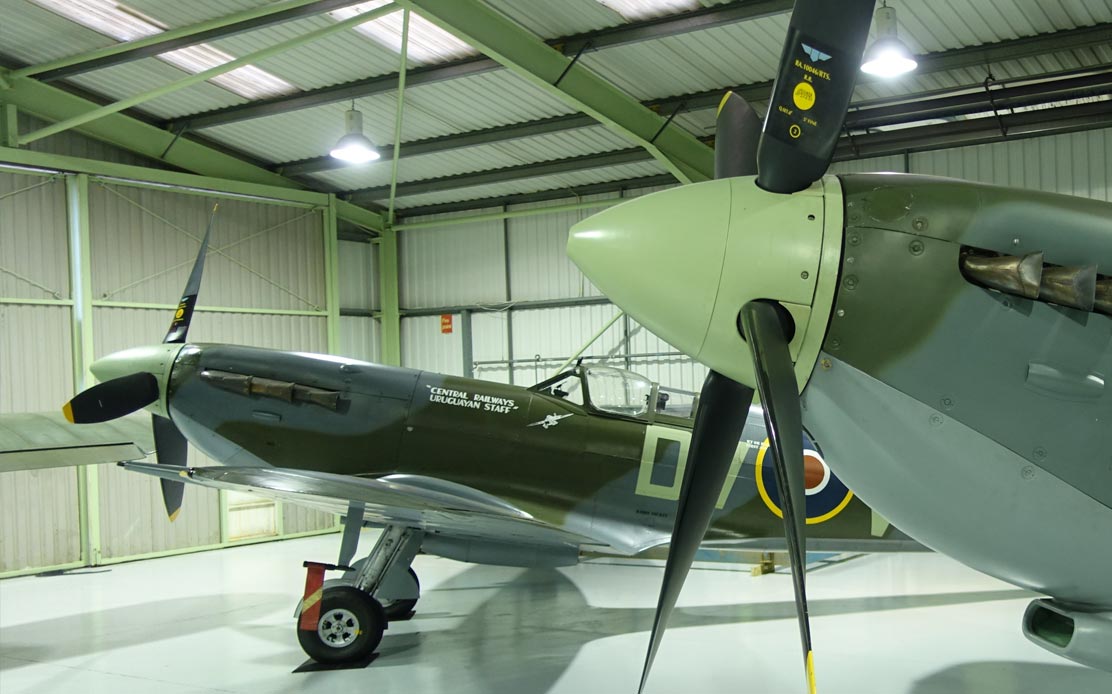Many variations
Spitfires used a variety of propellers during their time in service but what are Spitfire propellers made of? By the end of the war, the Spitfire had been through 13 different designs.
At the very beginning, the prototype and the initial Mk1s that followed it had a wooden two-bladed, fixed-pitch prop, which was the standard of the time. Having a fixed-pitch rather limits the performance of the aircraft, similar to riding a bicycle with only one gear. The gearing you have with this is a ‘one size fits all’ compromise, allowing you to move off from standstill, and still reach a reasonable top speed. Having a variable pitch (or extra gear) means that for a given RPM, you can increase the thrust in the same way that changing up a gear drives the bicycle forward with greater force. In the aircraft this allows a shorter take-off run, and protects the engine from detonation – which you would experience in a car if you drove off in too high a gear. In the car it would take a long time to reach cruising speed, in the Spitfire you would run out of runway.
With the advent of the Merlin III engine the two-bladed wooden propeller was replaced by the De Havilland three-blade metal, two-pitch propeller, significantly enhancing performance, particularly in the climb.
Constant speed propellers
Early Rotol Constant Speed propellers had magnesium alloy blades, In 1939/40 they were aluminium bladed, switching to impregnated wood in late 1940/early 41, later they re-introduced some aluminium blades back into their range.
Wood makes a comeback
Hydulignum, a high strength compressed birchwood laminate was the main wooden material used. Rotol bought in the compressed wooden blade blanks and machined them into propellers. This saved valuable metal for the war effort and had the advantage that a wooden propeller that struck the ground transmitted less shock load to the engine than metal.
At the root of the blade, the birch laminate gave way to mahogany and this construction method continues to this day including the four and five-bladed propellers fitted to Spitfires from the MkVIII to Mk24.
Discover more
Many visitors to the Biggin Hill Heritage Hangar express surprise when they find out that a huge number of Spitfire propeller blades are made from wood, even more so that brand new ones are today made in Germany.
You can discover a whole lot more about there iconic aircraft when you book a flight or a tour for yourself.

